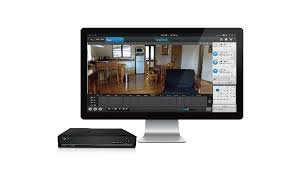How to Study CCTV installation Diagram and How to write a Quotation for Analog CCTV Installation
How to Study CCTV installation Diagram and
How to write a Quotation for Analog CCTV InstallationUnderstanding a CCTV installation diagram can be much easier if you follow these steps:
1. Identify the Legend:
Most diagrams will have a legend or key that explains the symbols used. This legend will define what each shape, line, and text represent in the diagram. Look for the legend box and familiarize yourself with the symbols used for cameras, DVRs, cables, power supplies, etc.
2. Trace the Connections:
Once you understand the symbols, follow the lines that connect the different components. These lines typically represent cables. Notice how the cameras connect to the DVR, how the power supplies connect to the cameras, and how any additional devices are integrated.
3. Identify Camera Locations:
The diagram should show the placement of the cameras. Look for symbols representing the cameras and see where they are positioned on the diagram layout (which might represent a building floor plan or property).
4. Understand Cable Types:
The diagram might differentiate between cable types using different line styles or colors. The legend should explain what each cable type represents (e.g., coaxial cable for video, power cable).
5. Look for Labels:
Diagrams may include labels for specific components. These labels might indicate the camera model, DVR model, or cable length. Pay attention to these details if they are relevant.
6. Match the Diagram to the Site:
Ideally, the diagram should correspond to the actual location where the CCTV system will be installed. Try to mentally map the camera locations on the diagram to the real-world location (if possible).
Additional Tips:
If the diagram is complex, break it down into smaller sections and focus on understanding one section at a time.
Don't hesitate to consult online resources or CCTV installation manuals if you encounter unfamiliar symbols or components.
If you're unsure about something specific in the diagram, it's always best to clarify with the person who provided it (e.g., security company, installer).
By following these steps and familiarizing yourself with the common symbols and layouts, you should be able to effectively study and understand a CCTV installation diagram.
Writing a Quotation for Analog CCTV Installation
An effective quotation for an analog CCTV installation should be clear, informative, and competitive.
Let see a breakdown of the key elements to include:
1. Company Information:
Your company name and logo
Contact details (phone number, email address)
Date
2. Client Information:
Client name (and company name if applicable)
Project location
3. Project Description:
Briefly describe the project scope.
Mention it's an Analog CCTV installation.
4. Equipment List:
Create a table with details like:
Item description (e.g., Analog Camera, DVR, Cables)
Quantity
Unit Price
Total Price
Clearly specify the brand and model of the equipment you'll be using.
Consider offering different camera options (bullet, dome) with varying resolutions to cater to different needs and budgets.
5. Installation Details:
Briefly outline the installation process.
Mention if the quote includes concealment of cables (chasing walls) or if it's for surface mounting only.
Specify the estimated installation time.
6. Terms and Conditions:
Clearly state your warranty period on equipment and installation.
Outline your payment terms (e.g., deposit upon acceptance, final payment upon completion).
Mention any exclusions (e.g., additional wiring beyond a certain length, building modifications).
7. Additional Information:
If applicable, include any additional services offered (e.g., post-installation training).
Mention if permits are required and who is responsible for obtaining them.
8. Call to Action:
Thank the client for their time and consideration.
Invite them to contact you with any questions.




Comments
Post a Comment